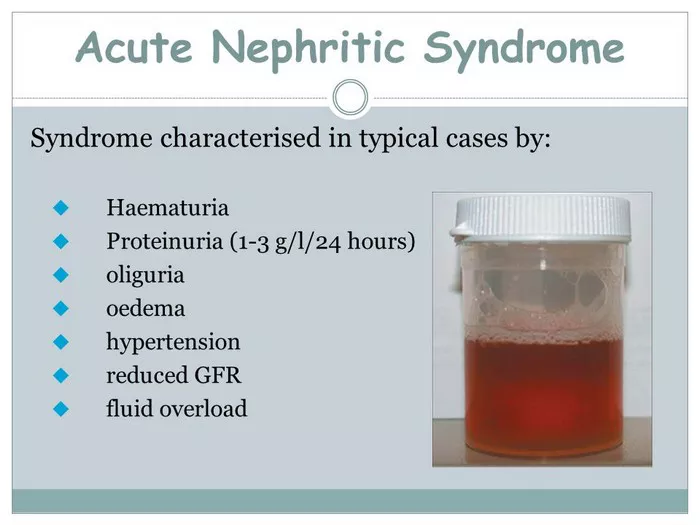Nephrotic syndrome is a kidney disorder characterized by a group of symptoms, including proteinuria (excessive protein in the urine), hypoalbuminemia (low levels of albumin in the blood), edema (swelling), and hyperlipidemia (high levels of lipids or fats in the blood). Among these symptoms, hyperlipidemia is a significant concern due to its association with increased cardiovascular risk and other complications. In this article, we will delve into the mechanisms underlying why nephrotic syndrome causes hyperlipidemia, the impact on overall health, and potential management strategies.
Understanding Nephrotic Syndrome
Before delving into the specifics of how nephrotic syndrome leads to hyperlipidemia, it’s crucial to understand the basics of this kidney disorder. Nephrotic syndrome can result from various underlying conditions, including but not limited to:
1. Minimal Change Disease (MCD): This is one of the most common causes of nephrotic syndrome in children. It is characterized by minimal changes in the appearance of kidney tissue under a microscope.
2.Focal Segmental Glomerulosclerosis (FSGS): This condition involves scarring in specific segments of the kidney’s filtering units (glomeruli) and is a common cause of nephrotic syndrome in adults.
3. Membranous Nephropathy: This condition involves thickening of the glomerular basement membrane, leading to protein leakage into the urine.
These are just a few examples, and nephrotic syndrome can also be secondary to other conditions such as diabetes, lupus, or certain infections.
The Role of Lipids in the Body
Lipids, including cholesterol and triglycerides, play vital roles in the body. They are essential components of cell membranes, serve as energy sources, and are involved in the production of hormones and bile acids. However, an imbalance in lipid levels, such as hyperlipidemia seen in nephrotic syndrome, can have adverse effects on health.
Mechanisms of Hyperlipidemia in Nephrotic Syndrome
Several factors contribute to the development of hyperlipidemia in individuals with nephrotic syndrome:
1. Decreased Albumin Levels: One of the hallmark features of nephrotic syndrome is hypoalbuminemia, which results from increased loss of albumin in the urine. Albumin plays a crucial role in maintaining normal lipid levels by binding to and transporting lipids in the blood. When albumin levels drop, there is reduced lipid-binding capacity, leading to elevated lipid levels.
2. Increased Hepatic Lipid Production: In response to low serum albumin levels and perceived hypovolemia (low blood volume) due to fluid retention, the liver compensates by increasing the production of lipids, including cholesterol and triglycerides. This contributes to the hyperlipidemia observed in nephrotic syndrome.
3. Altered Lipid Metabolism: The underlying mechanisms of lipid metabolism are disrupted in nephrotic syndrome. This includes changes in the activity of enzymes involved in lipid synthesis and clearance, as well as alterations in lipoprotein metabolism.
4. Renal Loss of Lipid-Binding Proteins: Along with albumin, the kidneys also lose other proteins involved in lipid metabolism, such as lipoproteins and apolipoproteins. This further impairs lipid transport and clearance, contributing to elevated lipid levels in the blood.
5. Insulin Resistance: Nephrotic syndrome is associated with insulin resistance, which can also contribute to dyslipidemia. Insulin resistance leads to increased hepatic production of triglycerides and decreased clearance of lipoproteins from the circulation.
Clinical Implications and Complications
Hyperlipidemia in nephrotic syndrome is not just a laboratory finding but has significant clinical implications:
1. Increased Cardiovascular Risk: Elevated lipid levels, particularly LDL cholesterol, are a major risk factor for cardiovascular disease. Individuals with nephrotic syndrome are already at an increased risk of cardiovascular events, and hyperlipidemia further exacerbates this risk.
2. Thrombotic Events: High levels of lipids can promote a pro-thrombotic state, increasing the risk of blood clots and thrombotic events such as deep vein thrombosis (DVT) and pulmonary embolism.
3. Nephrotic Syndrome Progression: Hyperlipidemia can contribute to the progression of kidney damage in nephrotic syndrome, leading to further renal impairment and complications such as chronic kidney disease (CKD) and end-stage renal disease (ESRD).
Management of Hyperlipidemia in Nephrotic Syndrome
Managing hyperlipidemia in individuals with nephrotic syndrome involves a multifaceted approach:
1. Dietary Modifications: A heart-healthy diet low in saturated fats, cholesterol, and sodium can help control lipid levels. Emphasizing fruits, vegetables, whole grains, and lean proteins while limiting processed foods and sugary beverages is recommended.
2. Medications: In some cases, lipid-lowering medications such as statins may be prescribed to help reduce cholesterol levels.
However, the use of these medications must be carefully monitored, especially in individuals with kidney disease, to avoid potential side effects.
1. Control of Underlying Disease: Treating the underlying cause of nephrotic syndrome, whether it’s primary kidney disease or a secondary condition, is crucial for managing associated complications like hyperlipidemia.
2. Lifestyle Modifications: Encouraging regular physical activity, maintaining a healthy weight, quitting smoking, and managing other cardiovascular risk factors such as hypertension and diabetes are essential components of managing hyperlipidemia in nephrotic syndrome.
Conclusion
In conclusion, nephrotic syndrome is associated with hyperlipidemia, primarily due to factors such as decreased albumin levels, increased hepatic lipid production, altered lipid metabolism, and insulin resistance. This dyslipidemia contributes to increased cardiovascular risk, thrombotic events, and kidney disease progression. Managing hyperlipidemia in nephrotic syndrome requires a comprehensive approach involving dietary modifications, medications, control of underlying disease, and lifestyle changes to reduce cardiovascular risk and improve overall health outcomes.

